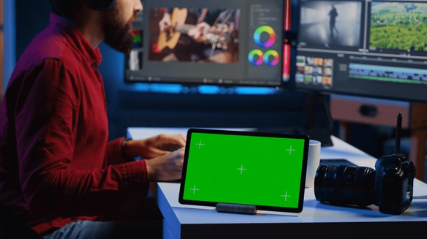How To Adjust Content-Aware Fill Sampling Settings for Better Results in After Effects?
After Effects' Content-Aware Fill is a powerful tool for removing unwanted objects or filling in gaps within your footage. It analyzes surrounding video frames and intelligently synthesizes new content to seamlessly fill the designated area. However, achieving optimal results requires fine-tuning the sampling settings. This article delves into the world of Content-Aware Fill and equips you with the knowledge to adjust its sampling settings for superior results in your After Effects projects.
Understanding Content-Aware Fill
When using Content-Aware Fill, you define a specific area within your footage that you want to replace or fill. After Effects then analyzes the surrounding frames and attempts to replicate the visual patterns and textures to create a natural-looking replacement.
Sampling plays a crucial role in this process:
- Sampling Area: This defines the region within the surrounding frames that After Effects uses as a reference for content synthesis.
- Sampling Quality: This setting determines the detail and complexity captured from the sampling area.
Essential Sampling Settings for Content-Aware Fill
Here's a breakdown of the key sampling settings you can adjust in After Effects:
1. Sampling Area:
- Search Area: This defines the size of the area surrounding the fill region that After Effects analyzes for content. A larger search area provides more reference data but might introduce unwanted elements if the surrounding footage doesn't perfectly match the desired replacement.
- Content Aware Repetile (Optional): This advanced option allows After Effects to replicate patterns or textures within the sampling area, potentially creating a more seamless fill for repetitive backgrounds or objects. However, it might not be suitable for all scenarios.
2. Sampling Quality:
- Sampling Quality: This setting balances speed and detail. Higher quality captures more intricate details from the sampling area but requires longer processing times. Conversely, lower quality works faster but might result in a less refined fill.
- Smoothness: This setting controls the blending of the synthesized content with the surrounding footage. Higher smoothness creates a more seamless transition, while lower smoothness might introduce visible borders around the filled area.
Tips for Optimizing Sampling Settings
Here are some practical tips to achieve the best results with Content-Aware Fill sampling settings:
- Start with a Large Search Area: Begin with a sizeable search area to provide After Effects with ample reference data. You can then gradually reduce its size if the results include unwanted elements.
- Balance Sampling Quality and Speed: Experiment with different sampling quality settings. For fast previews, use a lower quality, then increase it for final rendering when you need the finest detail.
- Adjust Smoothness for Seamless Blending: Fine-tune the smoothness setting to achieve a natural transition between the filled area and the surrounding footage. Aim for a balance that avoids visible borders without appearing overly artificial.
- Consider Content Type: The optimal sampling settings can vary depending on the type of content you're replacing. For simpler backgrounds, a smaller search area and lower sampling quality might suffice. Complex objects with intricate details might benefit from a larger search area and higher sampling quality.
Advanced Techniques and Considerations
- Layer Order and Transparency: The order and transparency of layers can impact the Content-Aware Fill results. Ensure the layer you're modifying is placed above the layers you want to use as reference for sampling.
- Masking for Precise Selection: Utilize masks to precisely define the fill area. This allows for more granular control over what gets replaced or filled.
- External Tools (Optional): Explore third-party plugins that offer additional functionalities for Content-Aware Fill, potentially providing more advanced sampling options or presets for specific scenarios.
Conclusion
By understanding the impact of Content-Aware Fill sampling settings and implementing these optimization tips, you can significantly enhance the quality and seamlessness of your replacements and fills in After Effects. Remember, experimentation and careful adjustments are key to achieving the most natural-looking results for your project's specific needs. So, refine your sampling settings, unleash the power of Content-Aware Fill, and bring your creative vision to life with remarkable precision!



